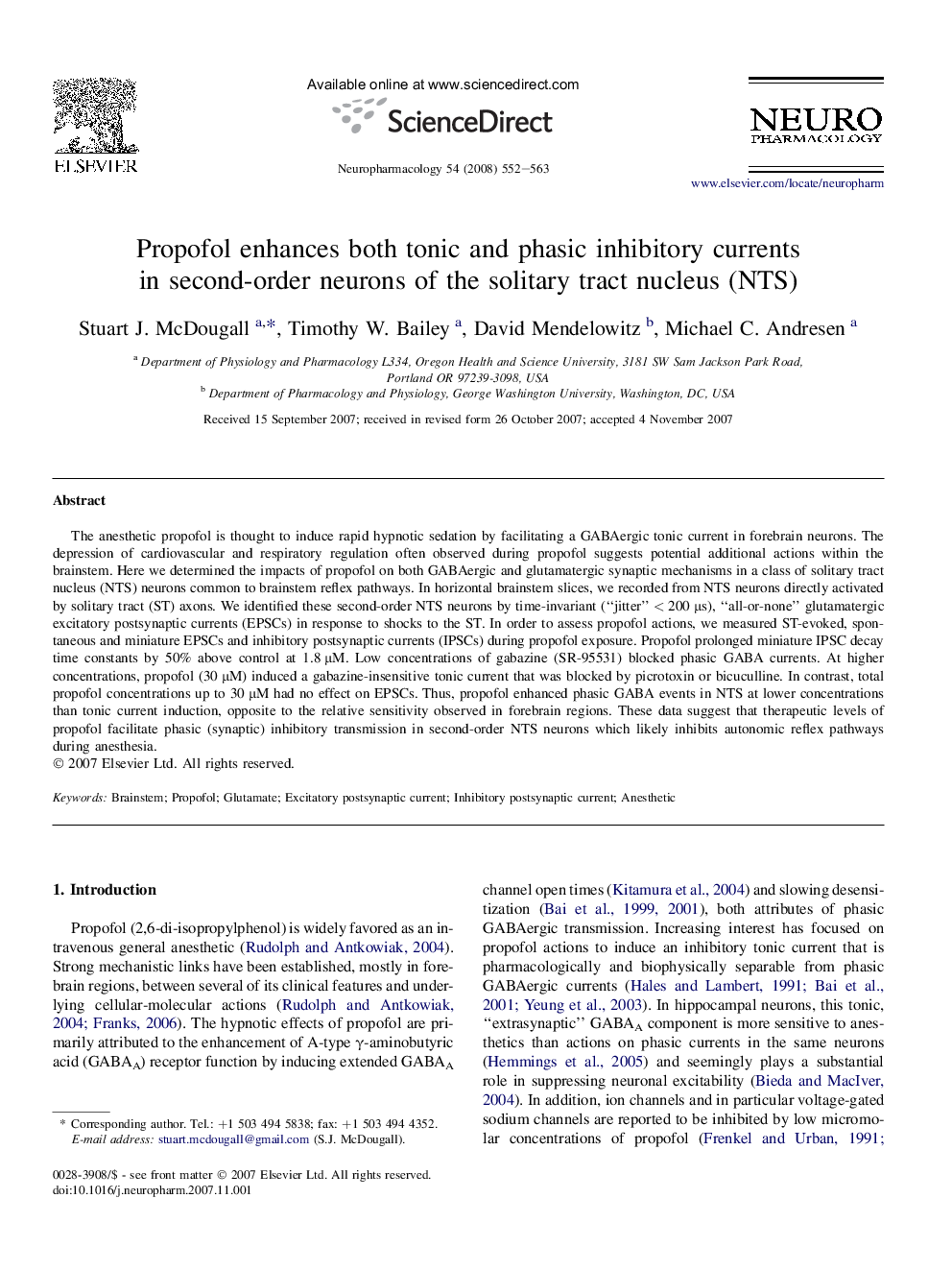| Article ID | Journal | Published Year | Pages | File Type |
|---|---|---|---|---|
| 2494710 | Neuropharmacology | 2008 | 12 Pages |
The anesthetic propofol is thought to induce rapid hypnotic sedation by facilitating a GABAergic tonic current in forebrain neurons. The depression of cardiovascular and respiratory regulation often observed during propofol suggests potential additional actions within the brainstem. Here we determined the impacts of propofol on both GABAergic and glutamatergic synaptic mechanisms in a class of solitary tract nucleus (NTS) neurons common to brainstem reflex pathways. In horizontal brainstem slices, we recorded from NTS neurons directly activated by solitary tract (ST) axons. We identified these second-order NTS neurons by time-invariant (“jitter” < 200 μs), “all-or-none” glutamatergic excitatory postsynaptic currents (EPSCs) in response to shocks to the ST. In order to assess propofol actions, we measured ST-evoked, spontaneous and miniature EPSCs and inhibitory postsynaptic currents (IPSCs) during propofol exposure. Propofol prolonged miniature IPSC decay time constants by 50% above control at 1.8 μM. Low concentrations of gabazine (SR-95531) blocked phasic GABA currents. At higher concentrations, propofol (30 μM) induced a gabazine-insensitive tonic current that was blocked by picrotoxin or bicuculline. In contrast, total propofol concentrations up to 30 μM had no effect on EPSCs. Thus, propofol enhanced phasic GABA events in NTS at lower concentrations than tonic current induction, opposite to the relative sensitivity observed in forebrain regions. These data suggest that therapeutic levels of propofol facilitate phasic (synaptic) inhibitory transmission in second-order NTS neurons which likely inhibits autonomic reflex pathways during anesthesia.
